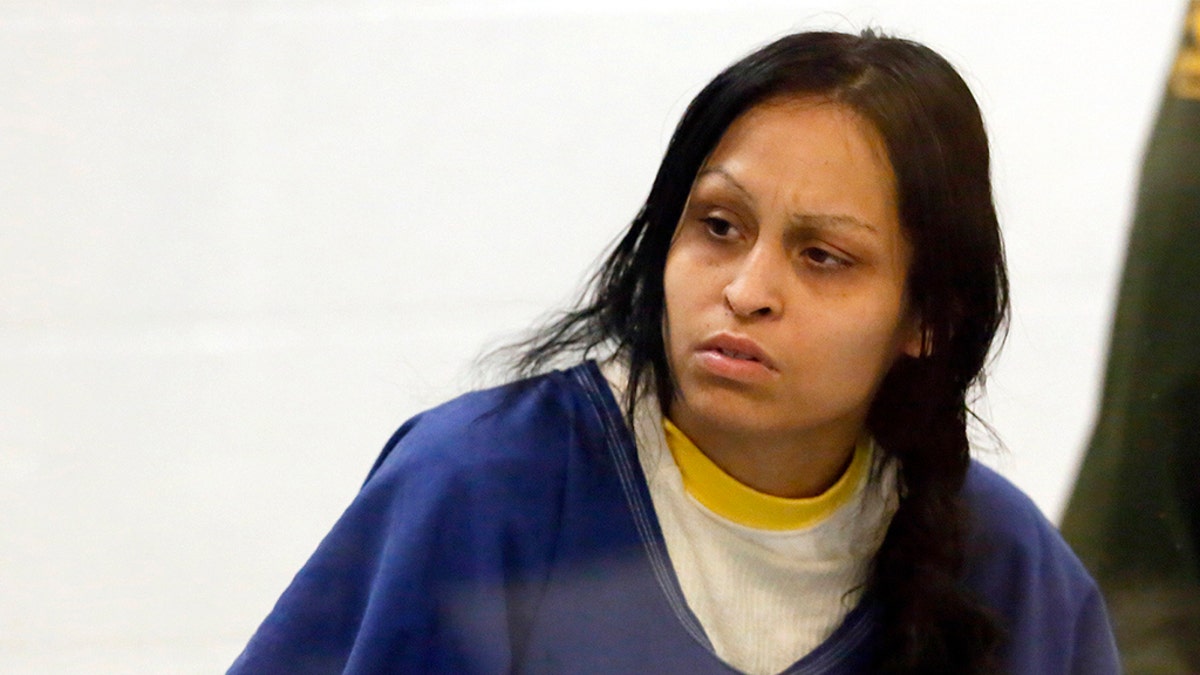Is justice truly served when the perpetrator becomes the victim? The case of Pearl Fernandez, a name now synonymous with unimaginable cruelty, raises disturbing questions about the nature of punishment and the realities within the walls of the prison system.
The attack on Pearl Fernandez in prison sent shockwaves, not just within the confines of the correctional facility, but throughout the public sphere. It ignited a complex and necessary discussion concerning the safety and well-being of inmates, particularly those who have committed heinous acts. The very concept of retribution is challenged when the lines between victim and aggressor become blurred. While the details surrounding the assault remain somewhat opaque, the fact of it happening at all is a stark reminder of the volatile environment that often exists behind bars.
Reports persist, painting a grim picture of Pearl Fernandezs current existence. The accounts suggest a continuation of suffering, of being subjected to torment within the prison system. While the specifics are difficult to independently verify, the possibility of such treatment demands scrutiny. Under these circumstances, Fernandez has the theoretical right to apply for a transfer to a different facility, particularly if she believes her life is in danger. However, the path to securing such a transfer is notoriously difficult, with prison authorities often hesitant to grant them, leaving inmates vulnerable to further harm. It forces us to question the effectiveness and humanity of our correctional systems, and whether they are truly designed for rehabilitation and safety, or if they, at times, become arenas for further violence.
| Category | Details |
|---|---|
| Full Name | Pearl Sinthia Fernandez |
| Age (as of 2024) | 38 years old |
| Conviction | First-degree murder |
| Victim | Gabriel Fernandez (son) |
| Sentence | Life in prison without the possibility of parole |
| Co-defendant | Isauro Aguirre (boyfriend) |
| Location of Crime | Palmdale, California |
| Date of Crime | May 2013 |
| Current Status | Incarcerated |
| Allegations | Physical and emotional abuse, torture, and murder of Gabriel Fernandez |
Reference: Los Angeles Times - Gabriel Fernandez Trial Coverage
The death of Gabriel Fernandez, in May of 2013, sent a tidal wave of grief and disbelief through the community of Palmdale, California, forever scarring the social fabric of the area. The circumstances of his death, and the subsequent revelations of the abuse he endured, were horrifying. The details that emerged during the legal proceedings painted a picture of systematic torture, inflicted by his own mother, Pearl Fernandez, and her boyfriend, Isauro Aguirre. The case swiftly became a symbol of the failures within child protective services and the disturbing depths of human cruelty.
The legal proceedings revealed the horrific details. The paramedics who arrived on the scene, following a 911 call placed by Pearl Fernandez, found Gabriel unconscious. While the initial report claimed he had merely hit his head, the true extent of his injuries was far more brutal. His skull was fractured, multiple ribs were broken, his teeth were bashed out, and his body bore the marks of prolonged and vicious abuse. These were not the injuries of an accident; they were the hallmarks of sustained torture.
The trial, and the subsequent conviction of Pearl Fernandez and Isauro Aguirre, brought a measure of legal closure, but it did little to alleviate the profound sense of loss and outrage that permeated the community. Pearl Fernandez, at the age of 34, was sentenced to life in prison without the possibility of parole, a just punishment for the unspeakable crime she committed against her own child. Aguirre received the same sentence, reflecting the collaborative nature of the abuse and the responsibility they both shared in Gabriels tragic death.
Yet, one of the most striking aspects of the trial was the chilling indifference displayed by Isauro Aguirre. He adopted an apathetic stance, betraying no visible emotion throughout the proceedings. This lack of remorse was, perhaps, a further indication of the profound cruelty that defined his actions and the deliberate nature of the abuse he inflicted. It left many wondering about the dark recesses of the human mind that could enable such a callous response to such horrific acts.
Its easy to point fingers, to assign blame. The system, the DCFS (Department of Children and Family Services), the Sheriffs Department, and even Isauro Aguirre himself, who admitted to delivering the fatal blow, all bear some responsibility. However, one cannot ignore the undeniable fact that Gabriels biological mother, Pearl, was the architect of his torment. Her actions, or perhaps her lack of action, as she allowed, and arguably participated in, the abuse, were the primary cause of his suffering. The question becomes, what motivated this behavior? Was it pure evil, mental instability, or a combination of factors? The answers remain complex and disturbing.
The circumstances of Pearl Fernandez's life, before and after the murder of her son, are worthy of further scrutiny. A former cellmate of Gabriel Fernandez's mother has revealed what happened to Pearl after she was sent to prison for the murder of her son. Reports of torture and violence in jail may be a way to try to cope with what has been done. "Gabriel Fernandezs mom walked into the prison and was telling people it was a dui." This revelation highlights the complex dynamics within correctional facilities and raises questions about the potential for further victimization.
The series of events leading up to Gabriel's death and the subsequent trial laid bare a comprehensive pattern of child abuse, neglect, and ultimately, murder. The documentary series that chronicled Gabriel's story, "The Trials of Gabriel Fernandez," exposed a systemic failure. While the series itself condemned the systemic failures of which Gabriel was a victim, the horrific torture of the child was something that struck a chord within audiences. The failure of various institutions to intervene, despite clear warning signs, was laid bare, raising questions about accountability and the effectiveness of child protection systems. His case, tragically, is not isolated.
One can only speculate on Pearl Fernandez's mental state. Considering the nature of the crimes, the possibility of mental illness is very high. It is logical to think that the person is not of sound mind or has issues with their development. But, considering the way she behaved while in custody, it brings up more questions. Did she have a low IQ, or did she suffer brain damage? What prompts a person to inflict such pain on a child, especially their own? Who screams to their partner about keeping their story straight and dirty talk? These are questions that are difficult to answer but are necessary for understanding the tragedy of Gabriel's death.
The legal and societal implications extend far beyond the immediate case. It has prompted a broader discussion on the effectiveness of child protective services, the early identification of at-risk children, and the need for comprehensive mental health support for both children and parents. The legacy of Gabriel Fernandez serves as a somber reminder of the devastating consequences of abuse and neglect, and the importance of creating a society that values and protects its most vulnerable members.
The case serves as a harsh reminder of the complexities of the human condition. The circumstances surrounding Pearl Fernandez's incarceration and the reports of attacks in prison, shed light on the brutal realities of the correctional system. It provokes uncomfortable questions about justice, punishment, and the treatment of inmates. The investigation into the attack on Pearl Fernandez, while still unfolding, compels us to examine the systemic failures and personal tragedies that converge within the walls of our prisons.
The discussion around the case of Pearl Fernandez and her prison experience, cannot be separated from the tragic circumstances surrounding the death of Gabriel. It highlights the interconnectedness of the events and the ripple effects of abuse and violence. Understanding this case requires a multifaceted approach, considering the legal aspects, the psychological dimensions, and the broader societal implications. Only through this comprehensive examination can we begin to grapple with the complexities and the lasting impact of this heartbreaking story.
The details of Pearl Fernandez's time in prison, and the revelations of abuse, further highlight the necessity for greater accountability within correctional institutions. The reports raise questions about the effectiveness of prison oversight, the treatment of inmates, and the potential for further violence. The situation also brings into focus the issue of inmates seeking transfers, and the barriers they often encounter in their attempts to secure safer conditions. The pursuit of truth and justice in this case must not end with Pearl Fernandez's conviction but must extend to addressing the issues that have emerged.
The case underscores the need for systemic reform. While individual accountability is crucial, systemic failures also contributed to Gabriel's suffering. This includes issues within child protection services, the lack of proper training for authorities, and the challenges of identifying and intervening in cases of abuse. The tragic death of Gabriel Fernandez should prompt a re-evaluation of the effectiveness of these systems and the implementation of strategies to prevent similar tragedies in the future. Only by addressing these issues can society honor Gabriels memory and prevent future acts of abuse.
The case of Pearl Fernandez, and the resulting attack on her in prison, provide a grim look at the nature of punishment and the human capacity for violence. It compels us to confront the disturbing realities within the walls of our correctional facilities and the complex dynamics that arise when victims become perpetrators, and perpetrators become victims. The quest for justice and healing in this case requires a deep examination of the circumstances and the people involved, and a commitment to preventing such tragedies from occurring again.



Detail Author:
- Name : Harry Konopelski Sr.
- Username : hegmann.dejon
- Email : rau.janet@hotmail.com
- Birthdate : 1982-02-18
- Address : 182 Art Flats Goodwinburgh, MO 89548
- Phone : 480-652-0450
- Company : Littel PLC
- Job : Civil Engineering Technician
- Bio : Laudantium minima pariatur omnis distinctio ea nobis ipsum recusandae. Id et et maiores tempore. Vel quia et dicta aliquid voluptates. Provident rerum ex magnam et aperiam quod sit.
Socials
tiktok:
- url : https://tiktok.com/@kaylin_official
- username : kaylin_official
- bio : Eum ipsa aliquid autem vel. Sint distinctio harum magni.
- followers : 4003
- following : 1294
facebook:
- url : https://facebook.com/kaylin_roberts
- username : kaylin_roberts
- bio : Voluptas officiis perspiciatis ex ea expedita. Eaque officiis enim ipsa porro.
- followers : 3471
- following : 1511
twitter:
- url : https://twitter.com/roberts2005
- username : roberts2005
- bio : Excepturi earum quo at dolorem quaerat aliquid facilis. Dolorem commodi optio quas corrupti sit. Deserunt impedit fuga quam facilis laborum.
- followers : 5770
- following : 463